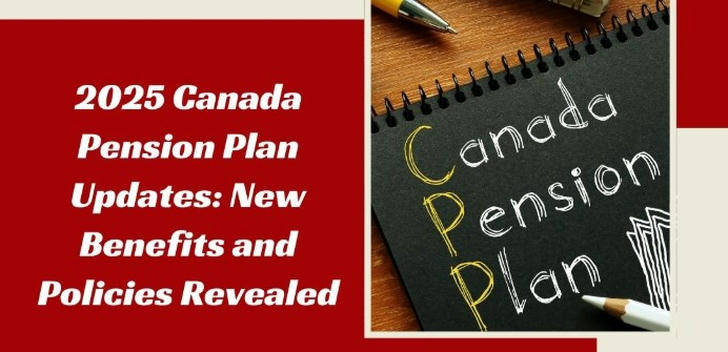Understanding Canada's Pension System in 2025: Changes and Eligibility Across Age Groups
In 2025, Canada's pension system has undergone several significant updates to better accommodate the evolving needs of its aging population. The updates primarily affect the eligibility criteria, benefit amounts, and timing of pension payments. This article will explore the types of pensions available in Canada, the specific changes introduced in 2025, and how these changes impact individuals in different age groups, particularly those aged 50, 60, 70, and 80.

Types of Pensions Available in Canada
Canada's pension system is designed to provide income support for retirees, disabled individuals, and their families. The three main types of pensions are:
Canada Pension Plan (CPP)
The Canada Pension Plan (CPP) is a public pension plan managed by the Government of Canada. It is funded through contributions from employees and employers, and it provides retirement income, disability benefits, and survivor benefits to eligible Canadians. The amount of CPP you receive depends on your average lifetime earnings and the number of years you have contributed to the plan.
In 2025, there have been changes to the CPP , including adjustments to the early and late retirement options. For instance, the minimum age for claiming CPP remains at 60 years old, but the standard retirement age has been slightly modified to accommodate longer life expectancy. Additionally, the maximum benefit amount has increased slightly to reflect inflation adjustments.
Old Age Security (OAS) Pension
The Old Age Security (OAS) Pension is a government-provided basic pension for seniors in Canada. It is intended to help older Canadians maintain a basic standard of living. OAS is typically available to individuals who are at least 65 years old and have lived in Canada for a certain number of years.
In 2025, the OAS pension has also seen updates . The government has introduced a new "flexible start" option, allowing individuals to claim OAS as early as 60 years old if they meet specific criteria.
Guaranteed Income Supplement (GIS)
The Guaranteed Income Supplement (GIS) is a means-tested benefit that provides additional income to low- or modest-income seniors who are receiving the OAS pension. It is designed to ensure that older Canadians have enough income to meet their basic needs.
In 2025, the GIS has been adjusted to account for inflation , with higher income thresholds for eligibility. This means that more seniors may qualify for GIS, especially those with modest retirement savings.
Pension Eligibility and Benefits by Age Group
Age 50: Early Retirement and Pension Options
• CPP: At age 50, you are not eligible to claim CPP . The earliest you can start receiving CPP is at 60 years old, but the amount will be reduced if claimed before the standard retirement age of 65.
• OAS: OAS is only available starting at 65 years old, so individuals at age 50 cannot claim it yet.
• GIS: GIS is tied to OAS eligibility, meaning you must first qualify for OAS before applying for GIS. At age 50, GIS is not an option.
In 2025, the government has introduced new tools to help individuals at this age group plan for retirement, such as enhanced online calculators and financial planning resources.
Age 60: Early Access to CPP
At 60 years old, individuals become eligible to claim the Canada Pension Plan (CPP), though the benefits are reduced compared to waiting until the standard retirement age of 65.
• CPP: If you choose to claim CPP at age 60, your monthly payments will be approximately 70% of the full amount . The exact amount depends on your average lifetime earnings and the number of years you contributed to the plan.
• OAS: You are still not eligible for OAS at age 60, as it requires residency in Canada for at least 10 years after turning 45 years old. However, the "flexible start" option introduced in 2025 allows some individuals to claim OAS early if they meet specific conditions.
• GIS: GIS is not available at age 60 since it is tied to OAS eligibility, which starts at 65.
Age 70: Full Pension Benefits and Beyond
• CPP: At age 70, you can receive the full CPP benefit , which is calculated based on your average lifetime earnings and contributions. If you delayed claiming CPP beyond 65, your monthly payments will be higher due to inflation adjustments.
• OAS: OAS is available starting at 65 years old, but by age 70, you have likely been receiving OAS for several years. The amount may have increased due to annual cost-of-living adjustments.
• GIS: If your income is below the threshold set by the government, you may be eligible for GIS at age 70. The GIS amount is means-tested and increases if your income is very low.
In 2025, the GIS income thresholds have been raised, making it easier for individuals at this age group to qualify for additional benefits. This adjustment ensures that more seniors can enjoy financial security in their later years.
Age 80: Long-Term Pension Benefits
• CPP: By age 80, you have likely been receiving the full CPP benefit for several years. If you delayed claiming CPP, your monthly payments may be higher than the standard amount.
• OAS: OAS payments continue to increase with annual inflation adjustments, providing greater financial stability for seniors at this age.
• GIS: If you qualify for GIS, the amount may be higher at age 80 due to inflation adjustments and potentially lower income levels.
In 2025, the government has also introduced new measures to support seniors aged 80 and above, including enhanced healthcare benefits and increased pension adjustments to reflect rising living costs.
Conclusion:
The Canada Pension Plan (CPP), Old Age Security (OAS) Pension, and Guaranteed Income Supplement (GIS) are critical components of Canada's pension system, providing financial support to retirees, disabled individuals, and seniors. In 2025, the system has introduced new flexibility and adjustments to better meet the needs of Canadians across all age groups.
